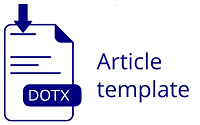Financial Distress Analysis using Altman Z-Score and Zmijewski Methods in Oil and gas sector listed on the IDX in the 2018-2021 period
Abstract
Full Text:
PDFReferences
Altman, E. I. (1968). Financial Ratios, Discriminant Analysis and The Prediction of
Corporate Bankcrupty. Journal Of Financial, 23 (4) : 189-209. 2002. Revisiting
Credit Scoring Models in a Basel II Environment. Prepared for “Credit Rating:
Methodologies, Rationale, and Defaul.
Darsono, & A. (n.d.). Pedoman Praktis Memahami Laporan Keuangan. Yogyakarta:
Andi.
Direktorat Jenderal Minyak dan Gas Bumi. (2016). . Cadangan Penyangga Energi
Dibangun 2016, di akses dari
http://migas.esdm.go.id/post/read/cadanganpenyangga-energi-dibanguntahun-2016 pada tanggal 20 September 2022.
Elloumi, F., & Gueyié, J. P. (2001). Financial distress and corporate governance: An
empirical analysis. Corporate Governance: The International Journal of
Business in Society, 1(1), 15–23. https://doi.org/10.1108/14720700110389548
Hanafi, M. (2010). Manajemen Keuangan Edisi I. Yogyakarta: BPFE.
Hantono. (2018). Konsep Analisa Laporan Keuangan dengan Pendekatan Rasio
dan SPSS.
Hardani. (2020). Metode Penelitian Kualitatif dan Kuantitatif. Yogyakarta: Pustaka
Ilmu.
Kasmir. (2014). Analisis Laporan Keuangan. Jakarta: Rajawali Pers.
Krisanti, F. T. (2019). Financial Distress - Teori dan Perkembangannya Dalam
Konteks Indonesia (I, 2019). Malang: Inteligensia Media.
Liew, S., Choy, W., Munusamy, J., Chelliah, S., & Mandari, A. (2011). Effects of
Financial Distress Condition on the Company Performance: A Malaysian
Perspective.
Muslich, M. (2008). Manajemen Keuangan Modern:Analisis, Perencanaan dan
Kebijaksanaan. Jakarta: Bumi Aksara.
Pangkey, P. C., Saerang, I. S., & Maramis, J. B. (2018). Analisis Prediksi
Kebangkrutan Dengan Menggunakan Metode Altman Dan Metode Zmijewski
Pada Perusahaan Bangkrut Yang Pernah Go Public Di Bursa Efek Indonesia.
Jurnal EMBA, 6(4), 3178–3187.
Primasari, S. N. (2017). . (2017). Analisis Altman Z-Score, Grover Score, Springate
Dan Zmijewski Sebagai Signaling Financial Distress ( Studi Empiris Industri
Barang-Barang Konsumsi di Indonesia ). Accounting and Management
Journal, 1(1), 23–43.
Rudianto. (2013). Akuntansi Manajemen Informasi untuk Pengambilan Keputusan
Strategis. Jakarta: Erlangga.
Sekaran, U. dan Bougie, R. (2017). Metode Penelitian Untuk Bisnis, Edisi 6, Jakarta:
Salemba Empat.
Sugiyono. (2017). Metode Penelitian Bisnis (Pendekatan Kuantitatif, Kualitatif, dan
R&D), Cetakan ke-25, Bandung: Alfabeta.
DOI: https://doi.org/10.21107/jkim.v3i4.21197
Refbacks
- There are currently no refbacks.
Copyright (c) 2024 Jurnal Kajian Ilmu Manajemen (JKIM)




